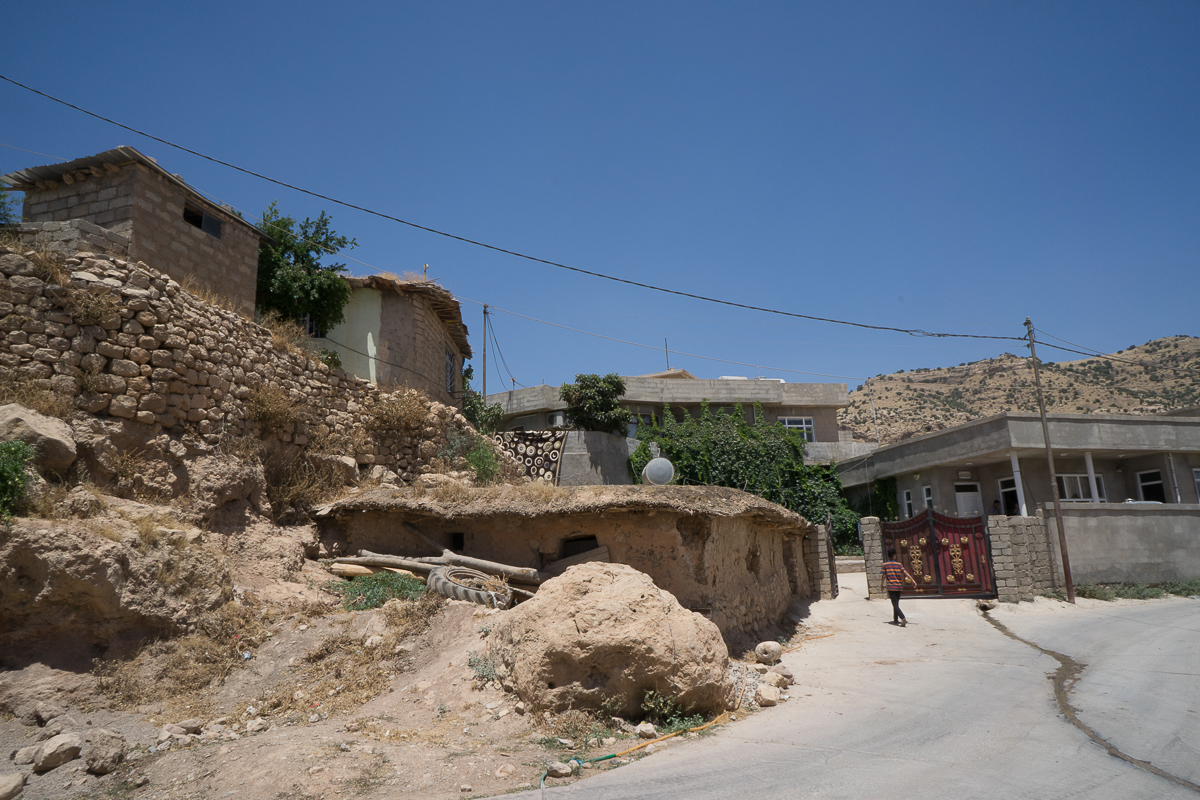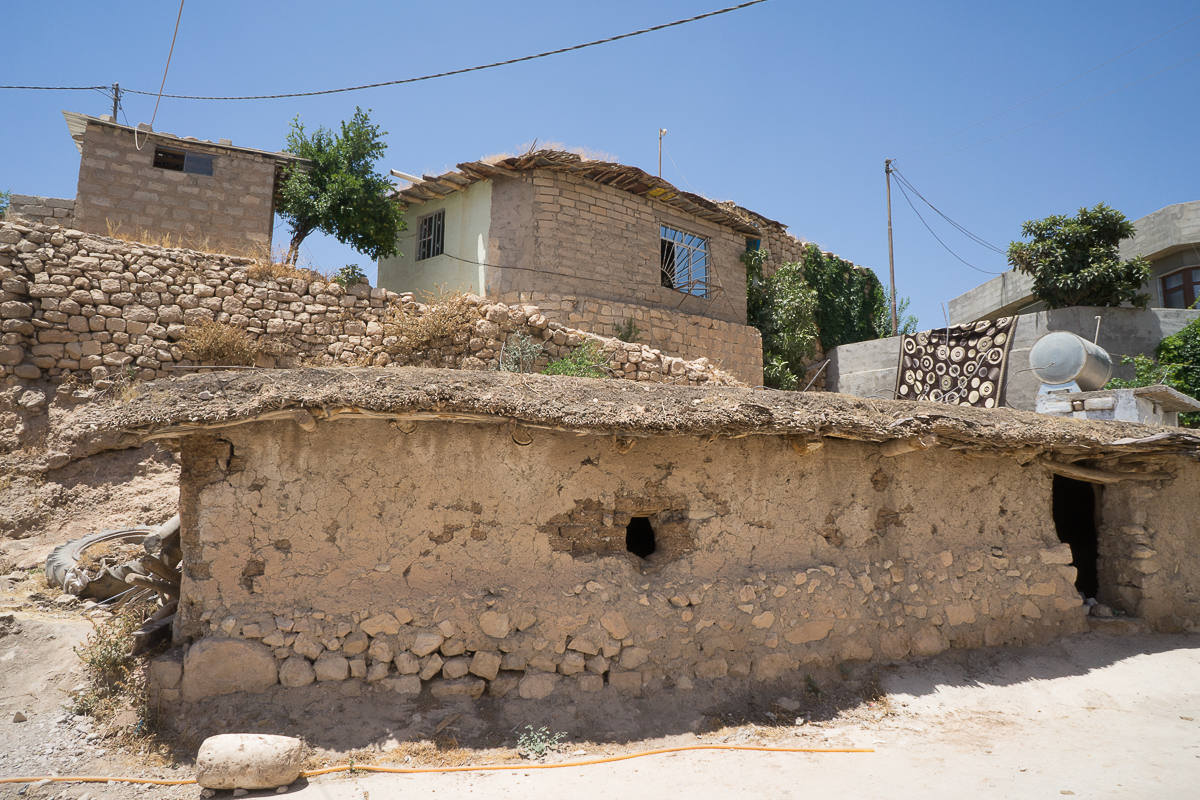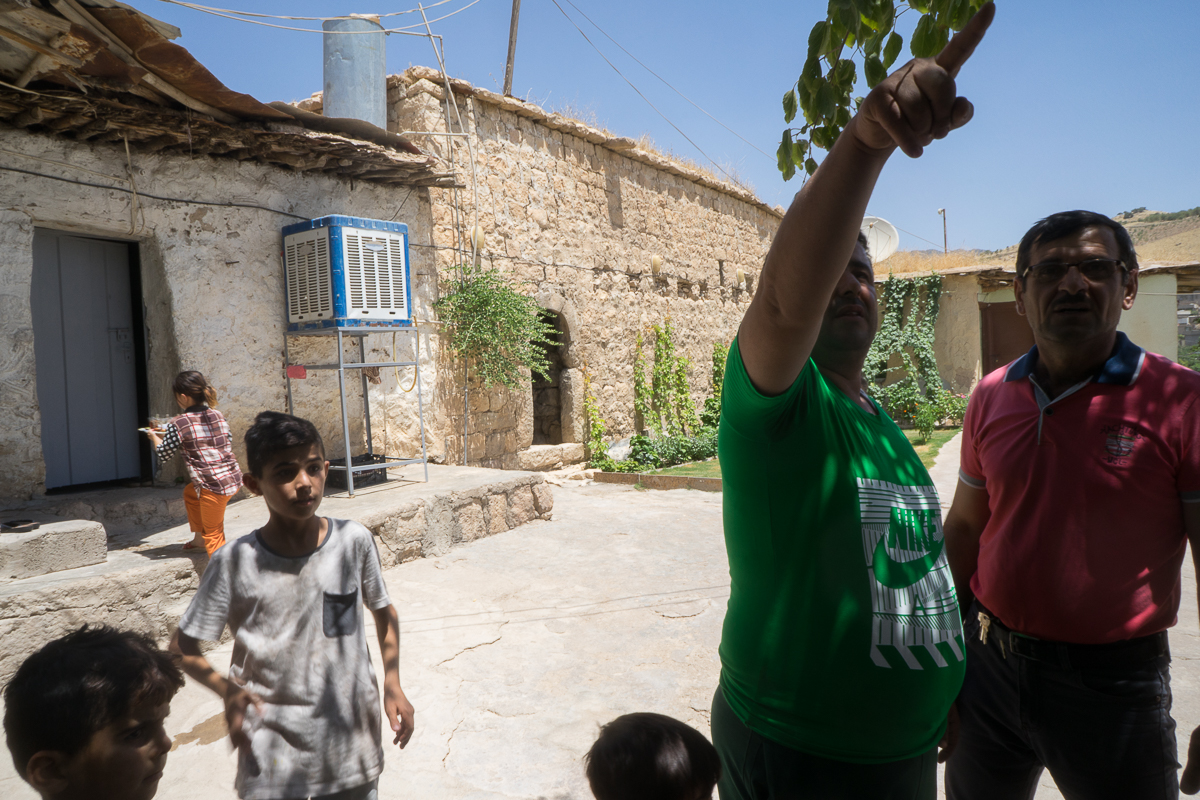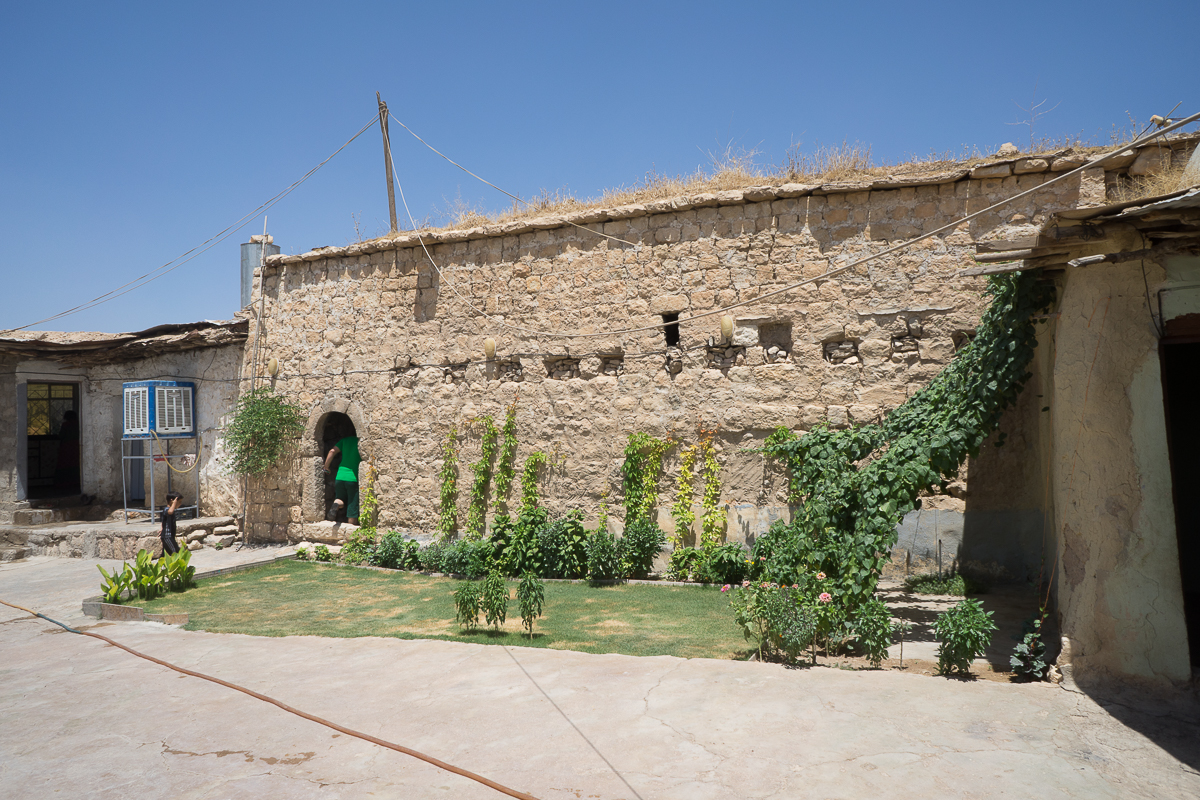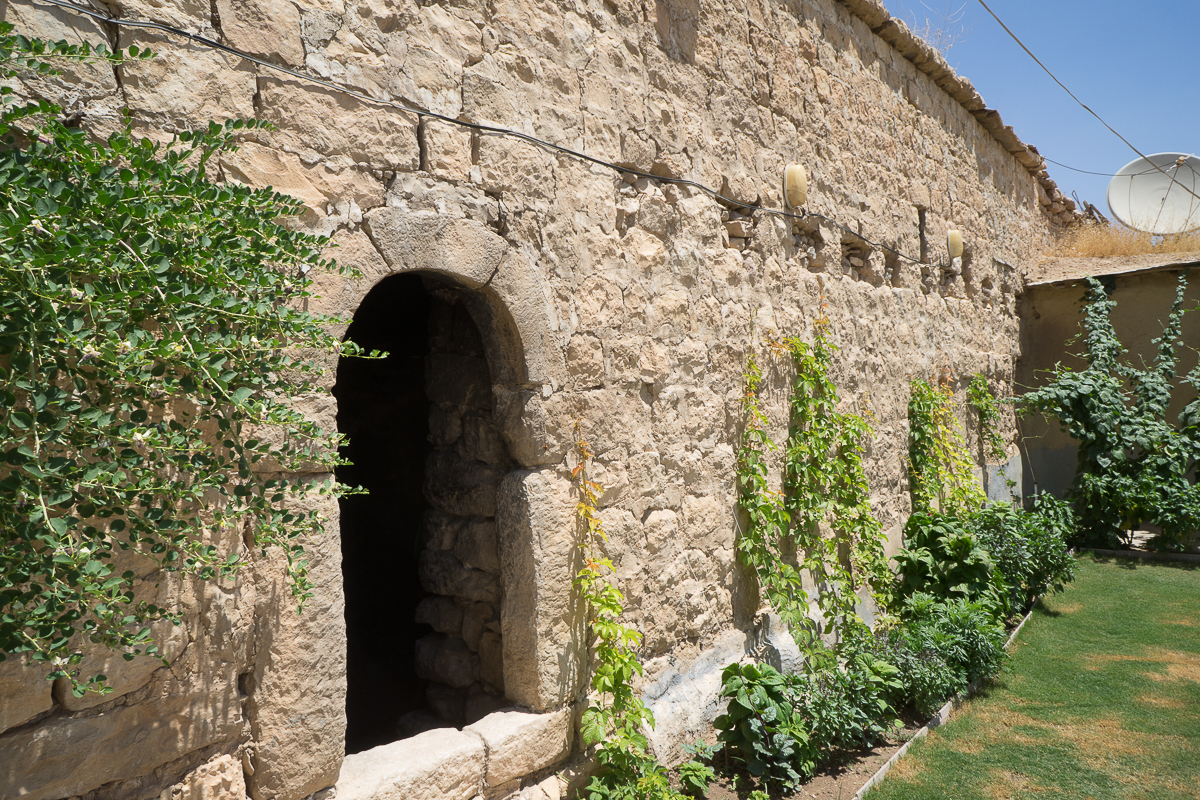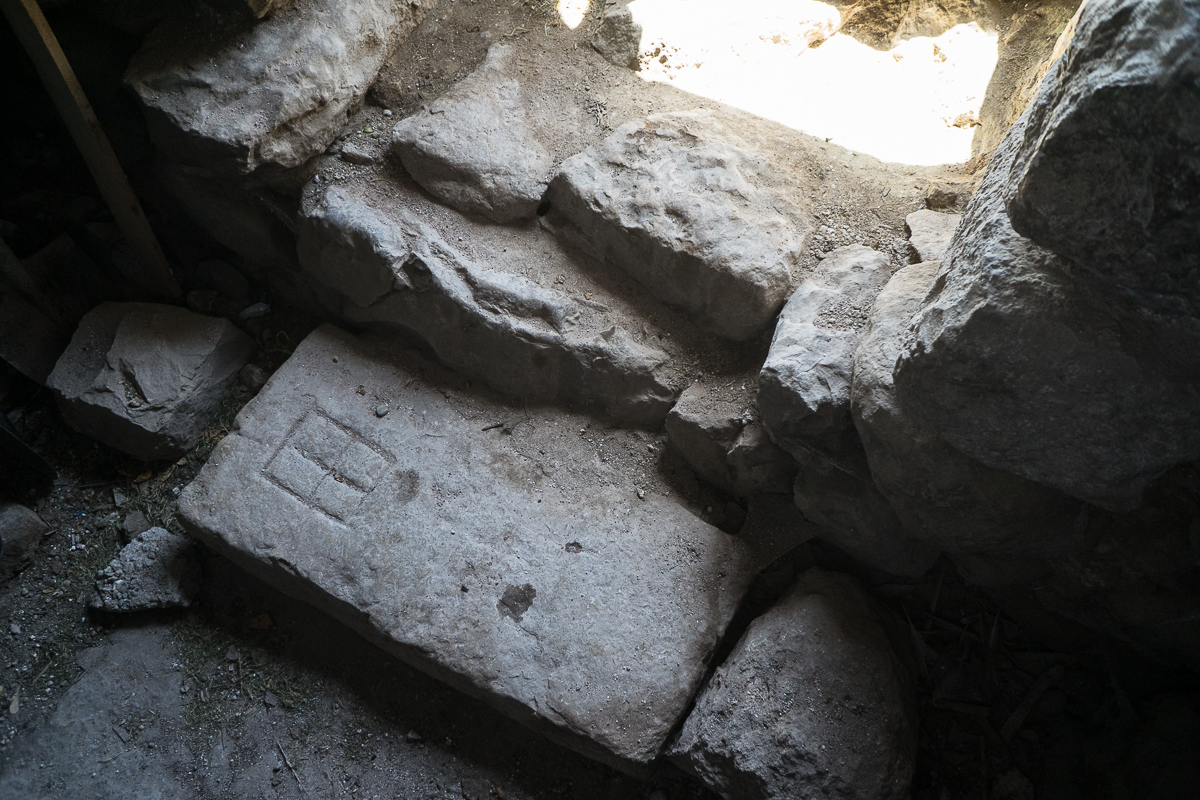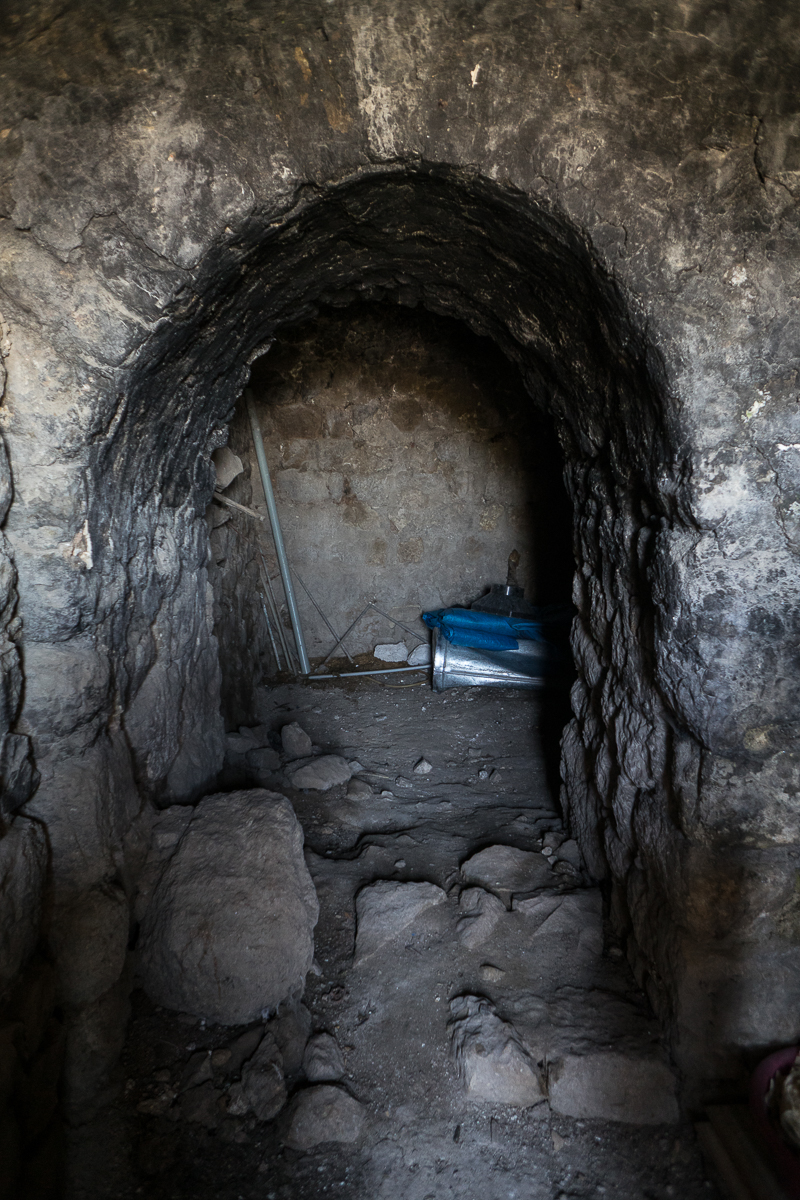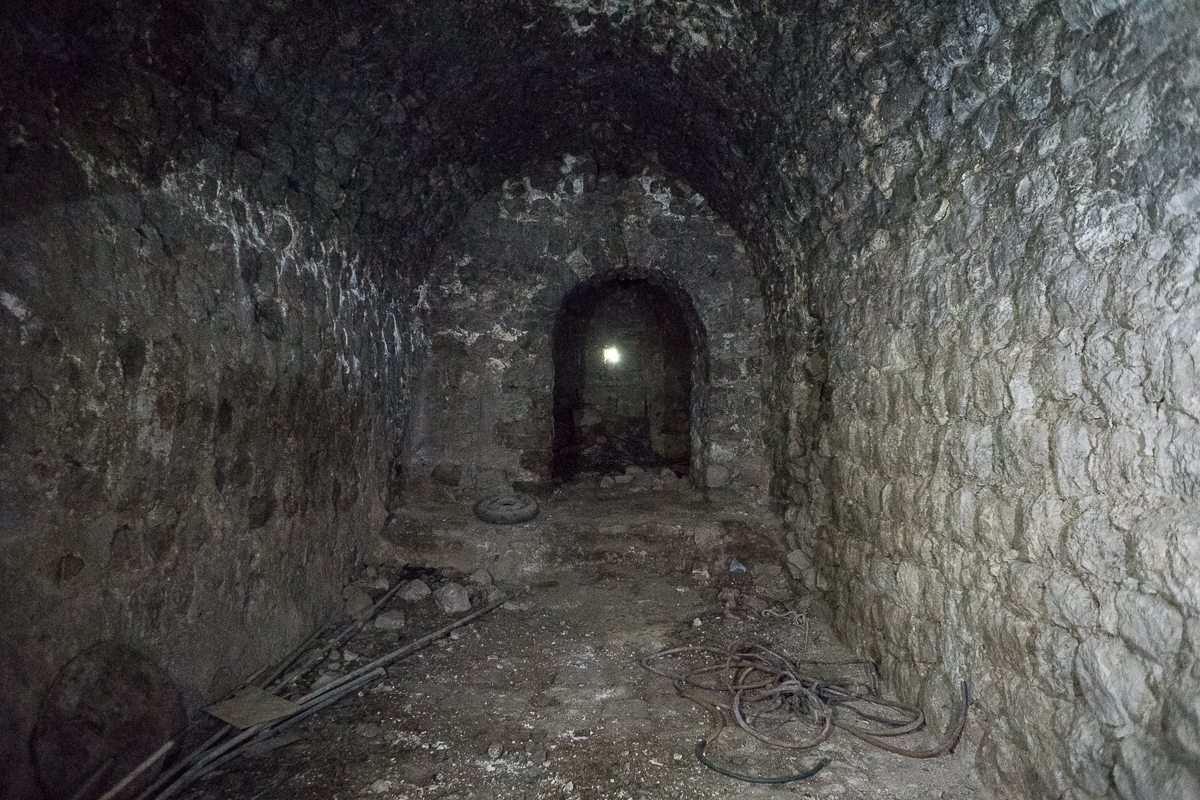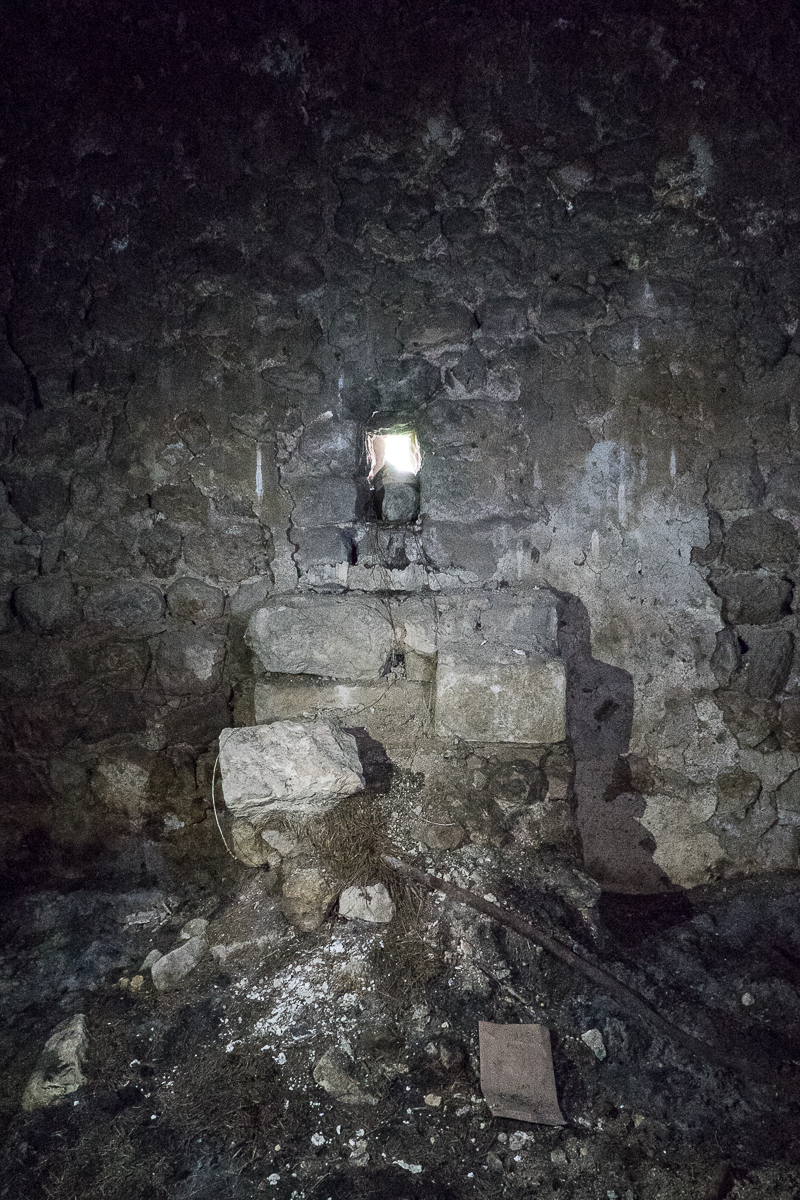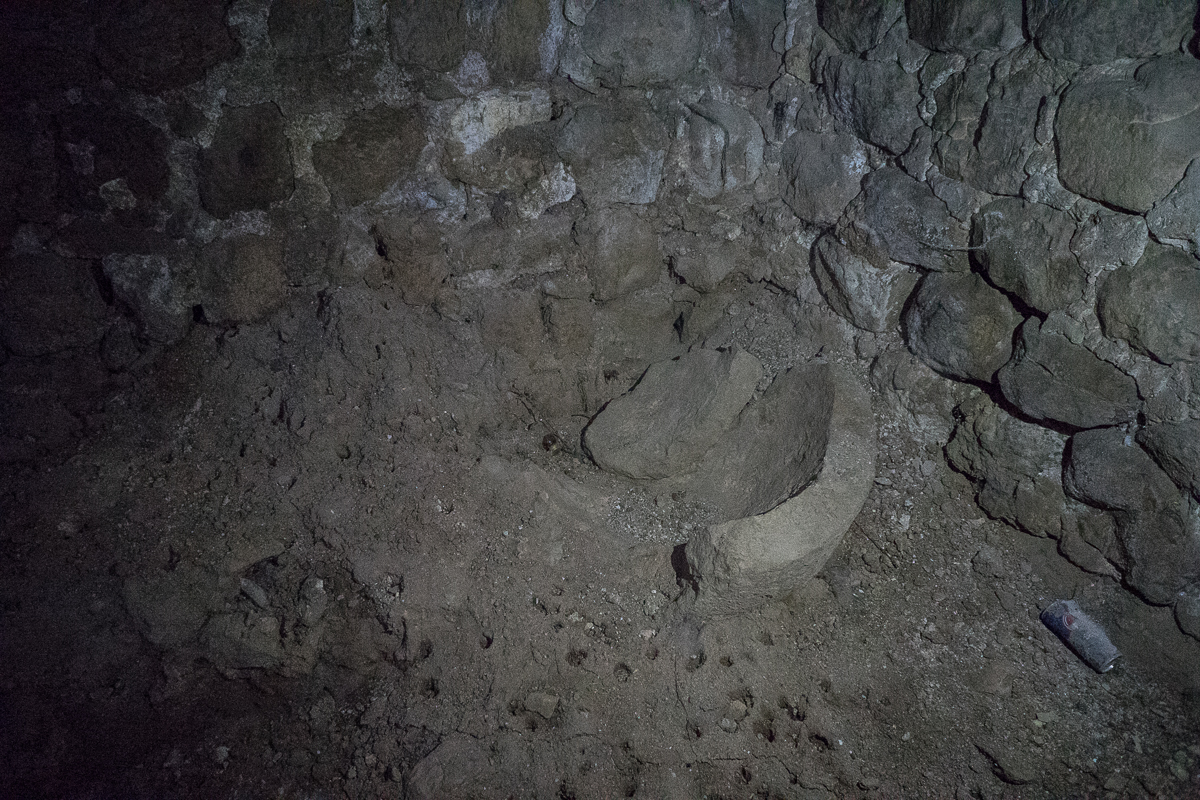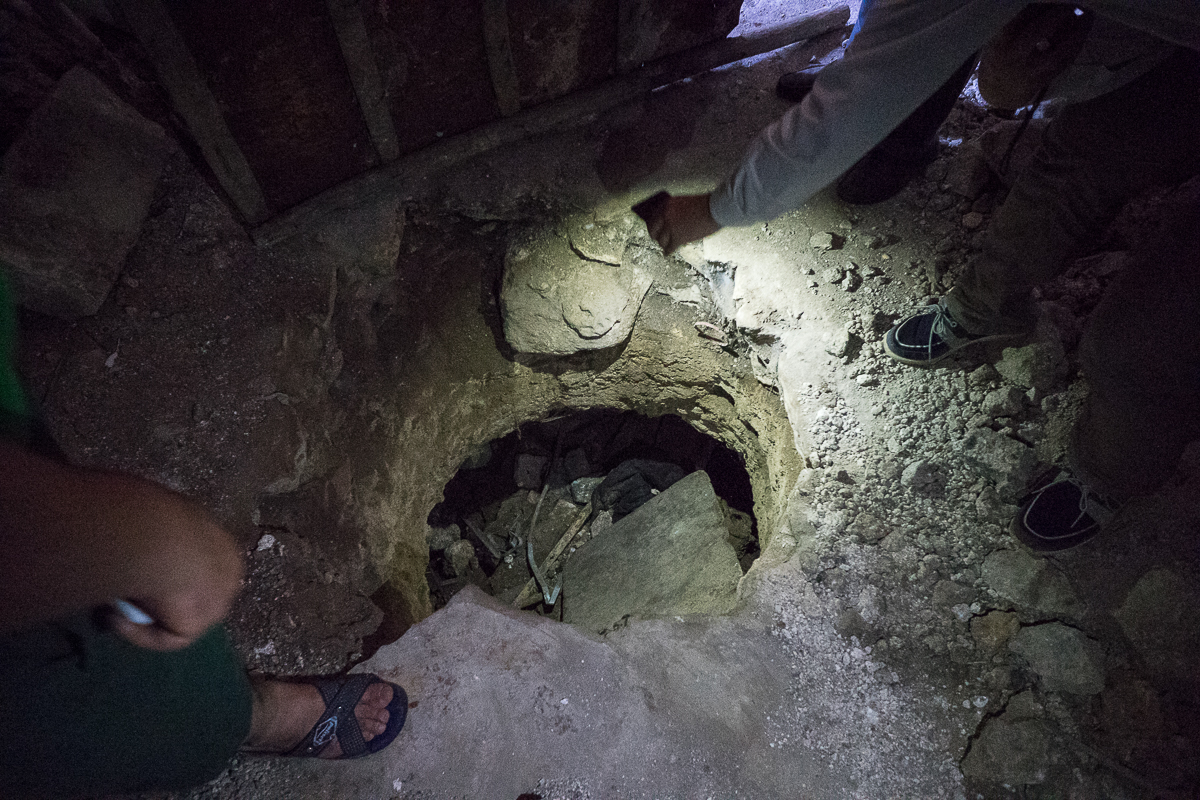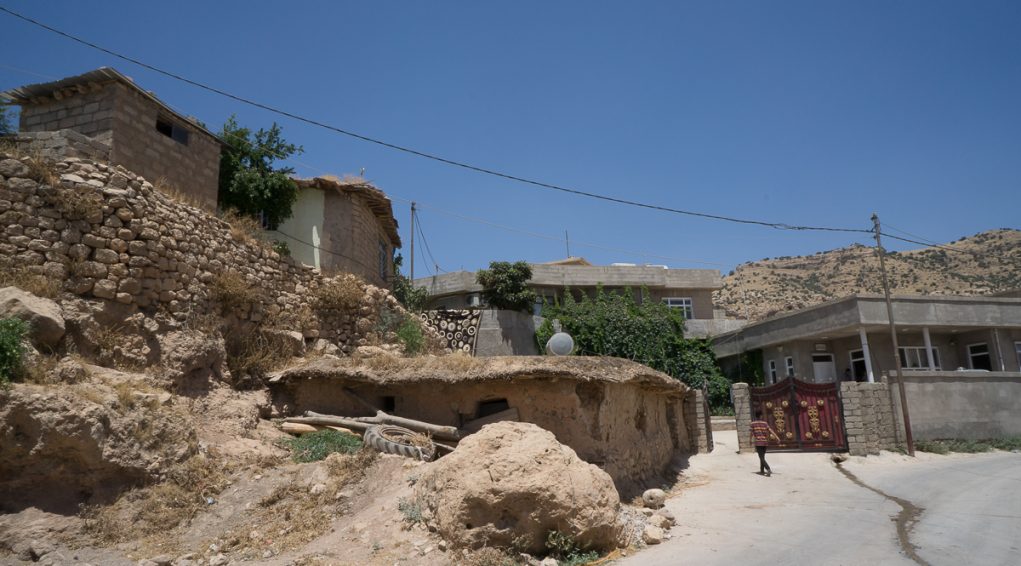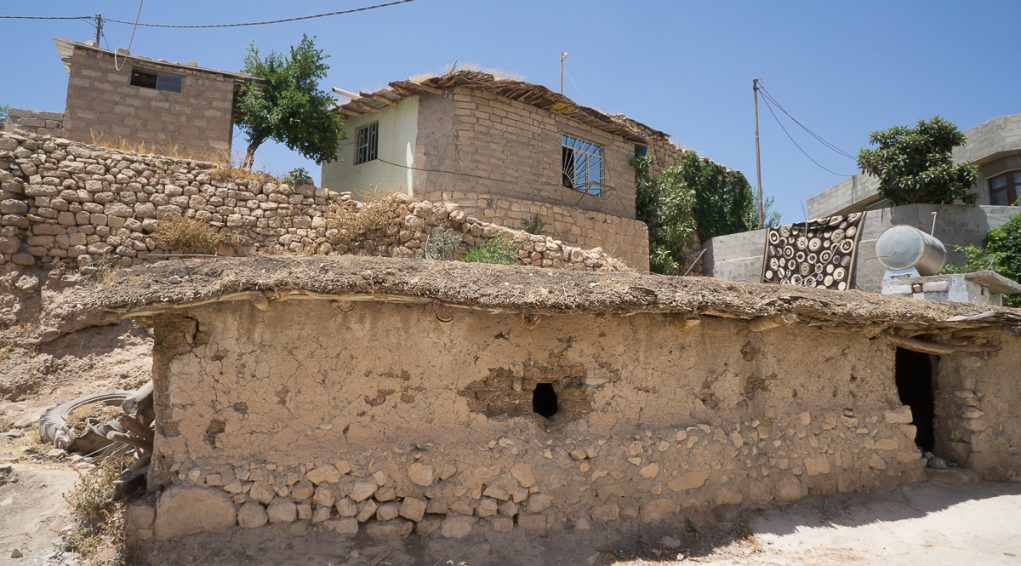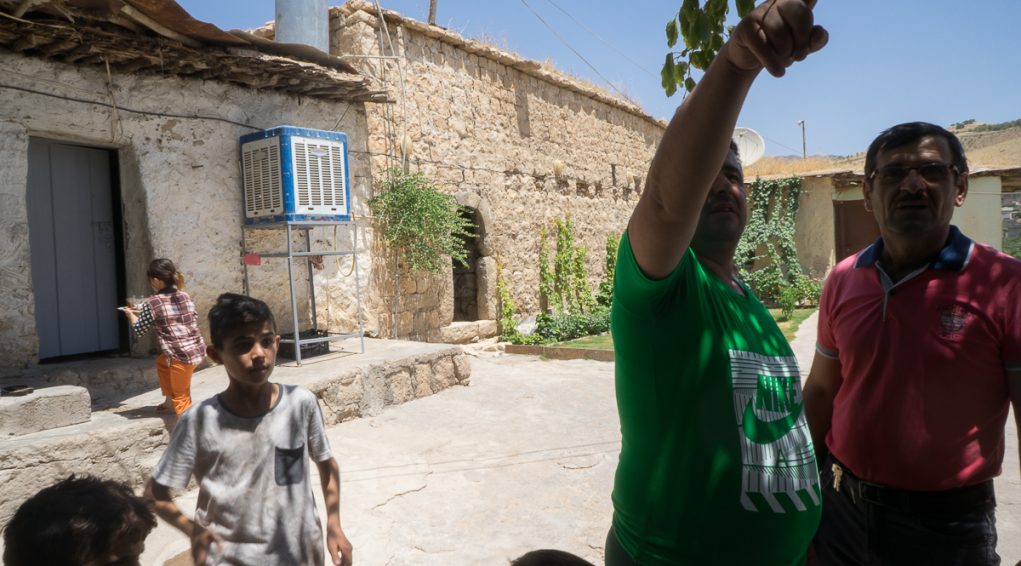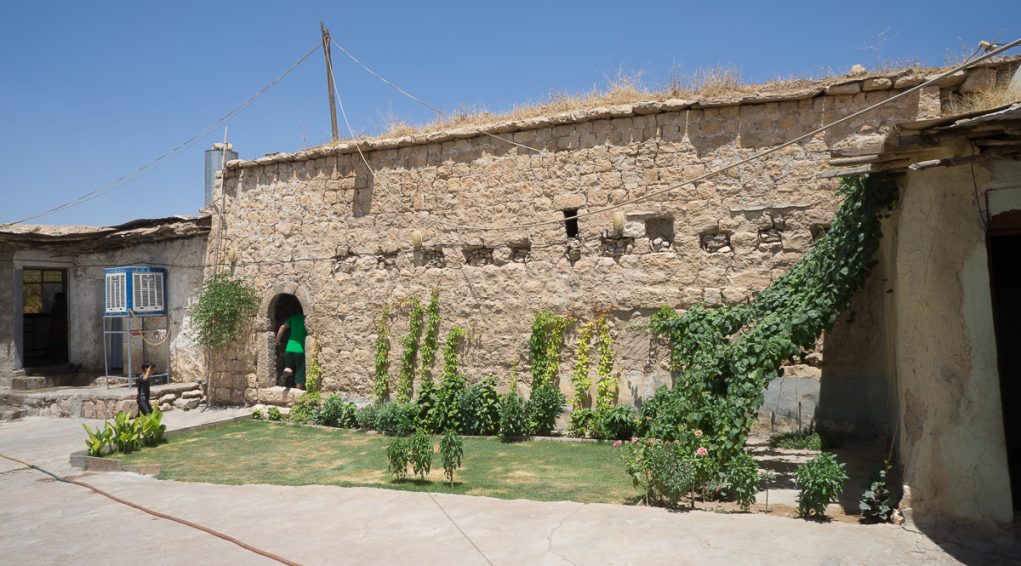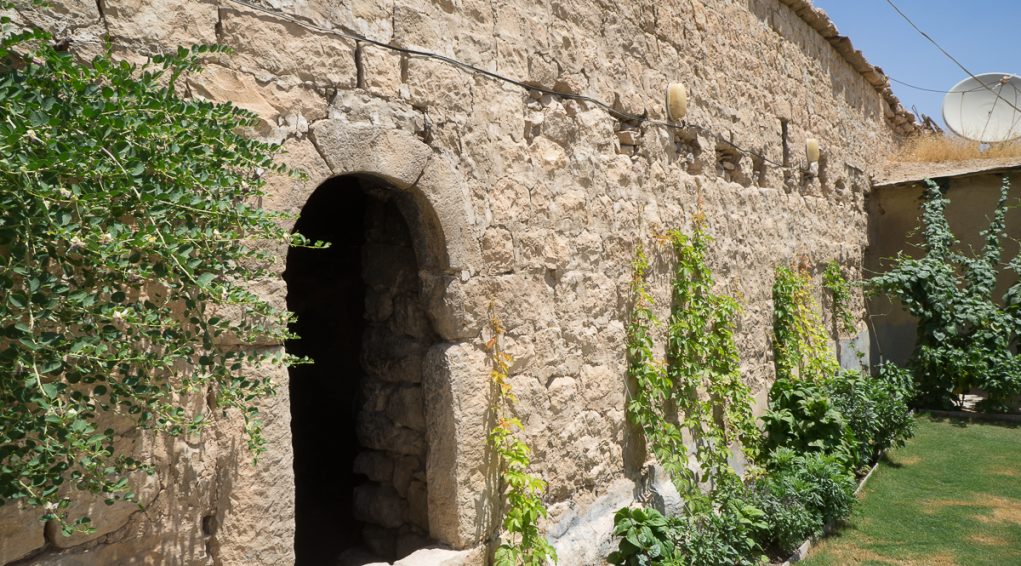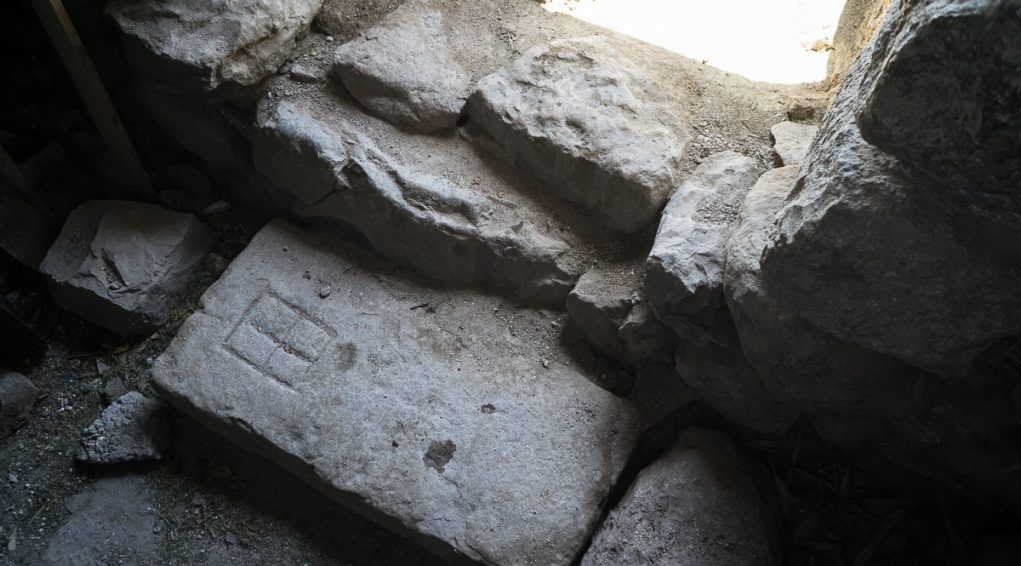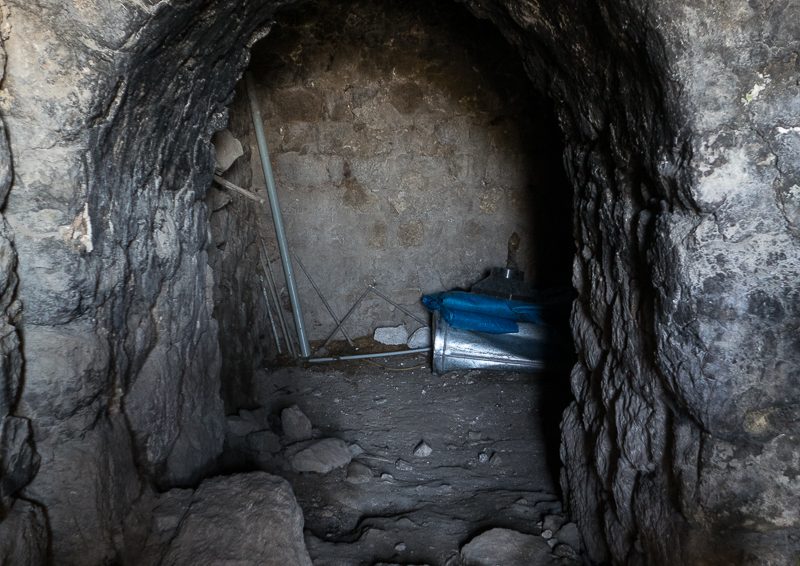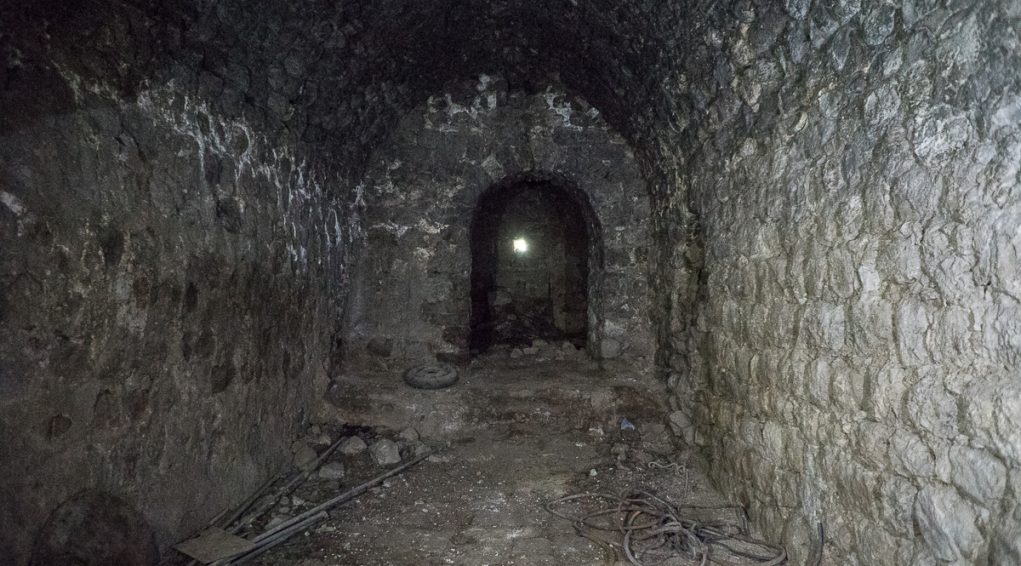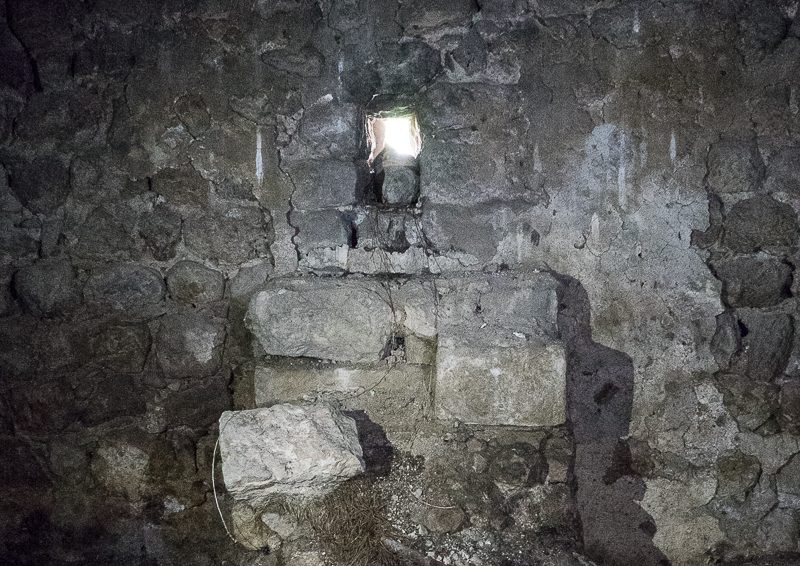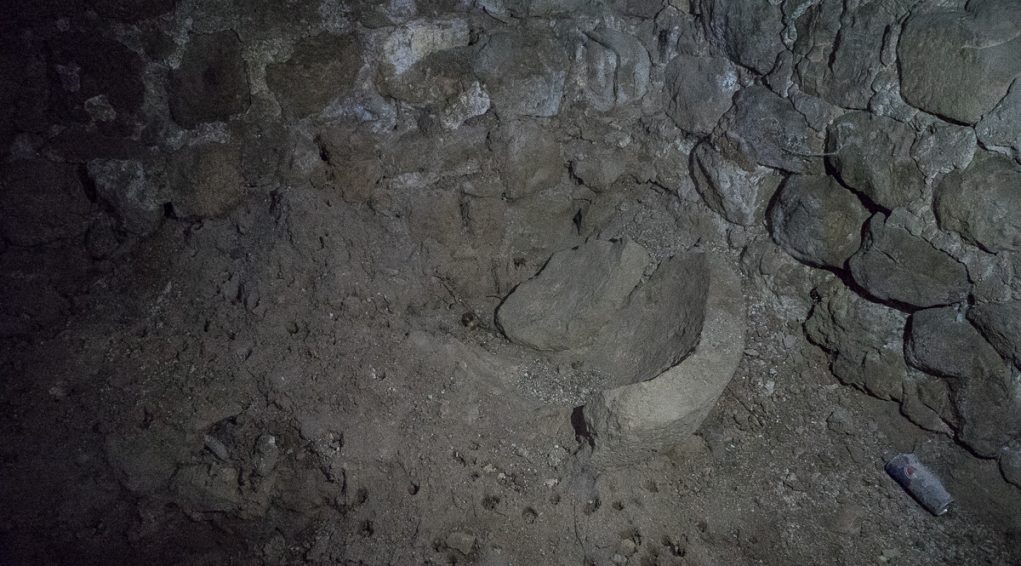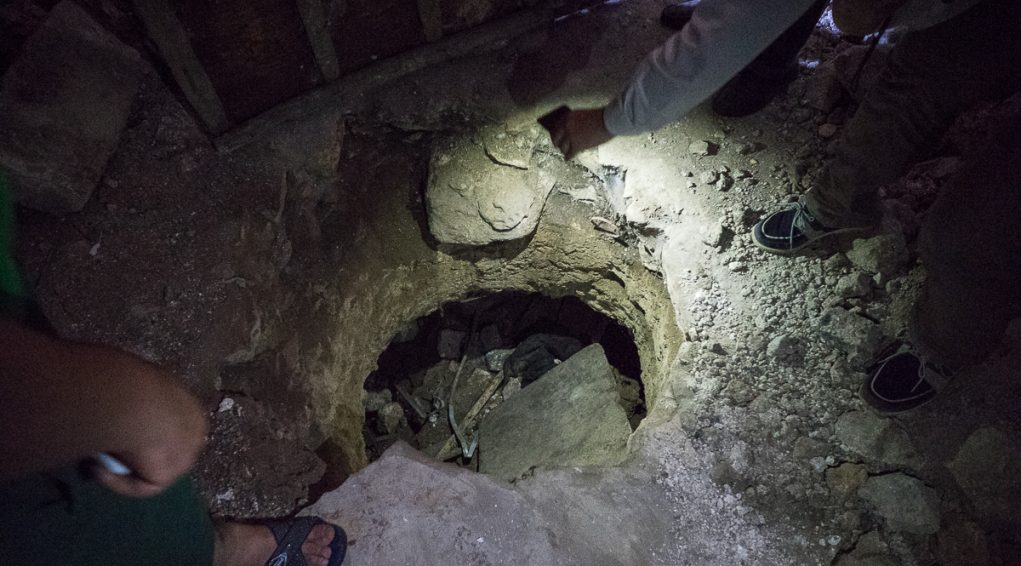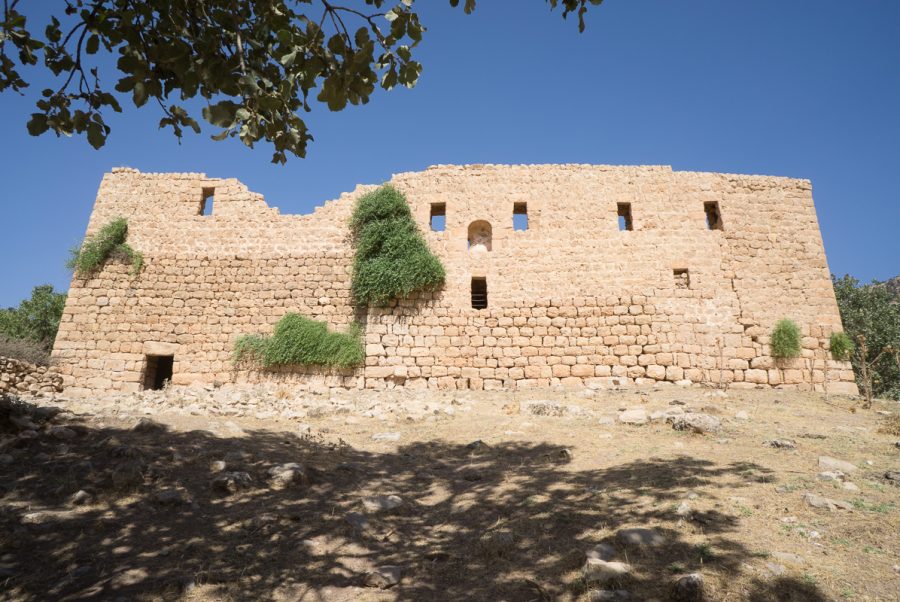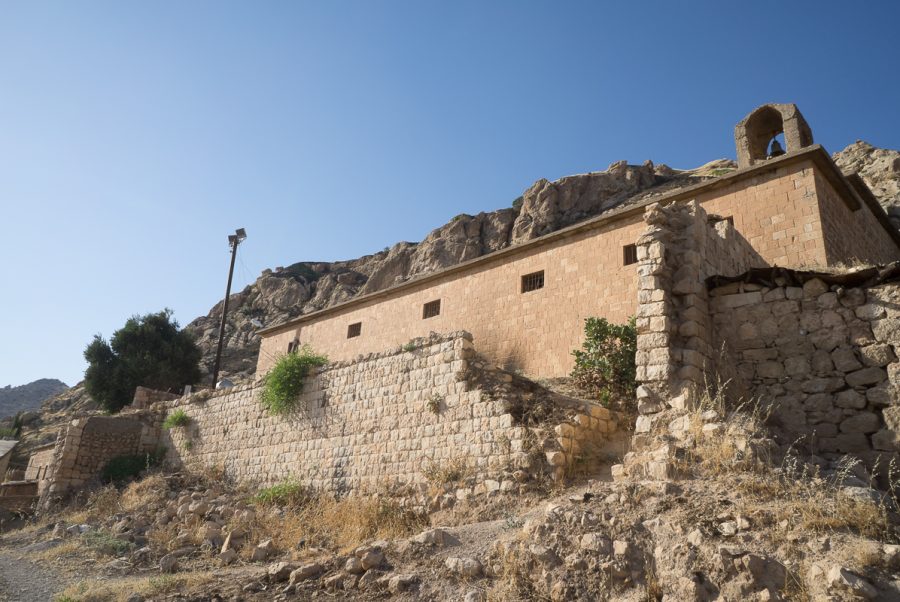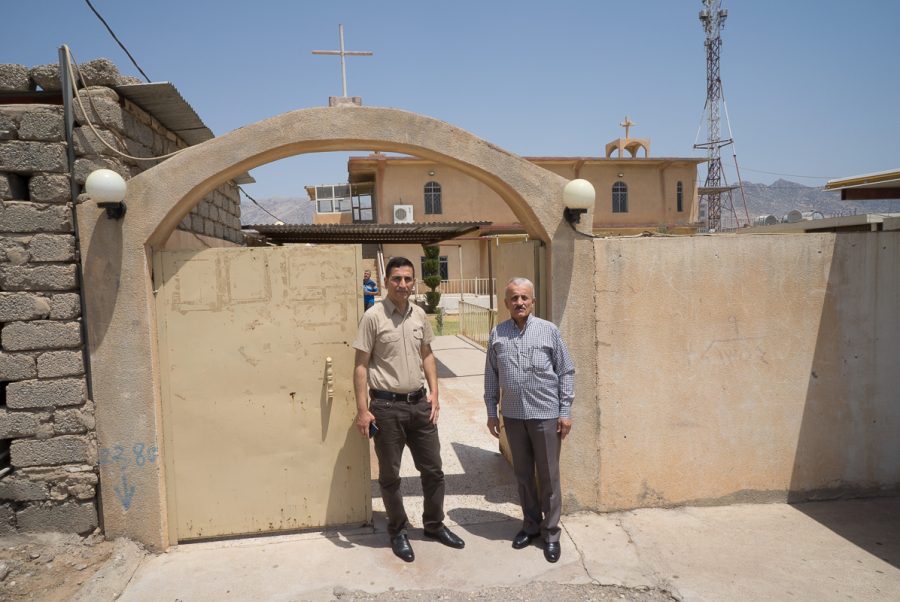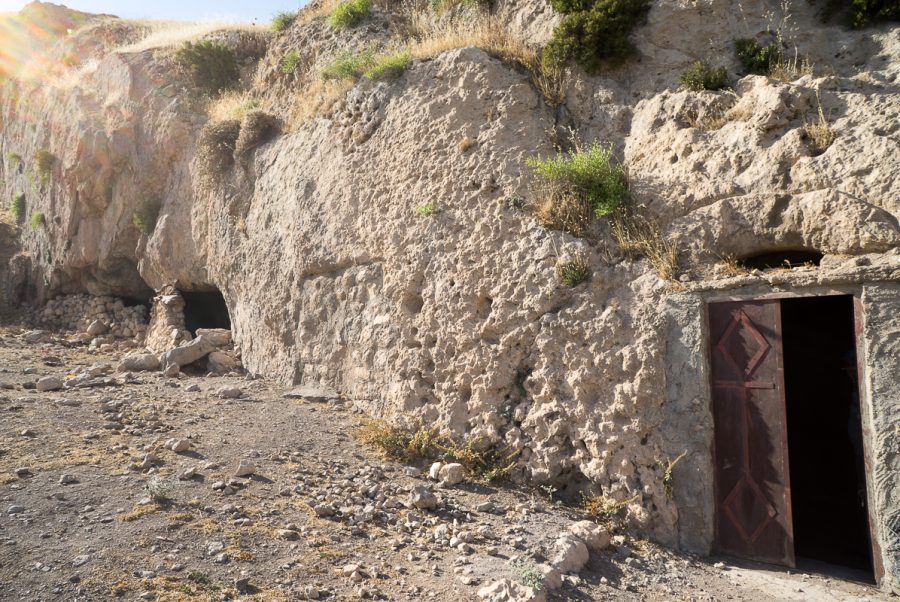The Church in Sherman (Kon Cixhor)
The church in Sherman is located at 36°48’04.9″N 43°43’33.2″E and 736 metres altitude on a small promontory at the heart of the village.
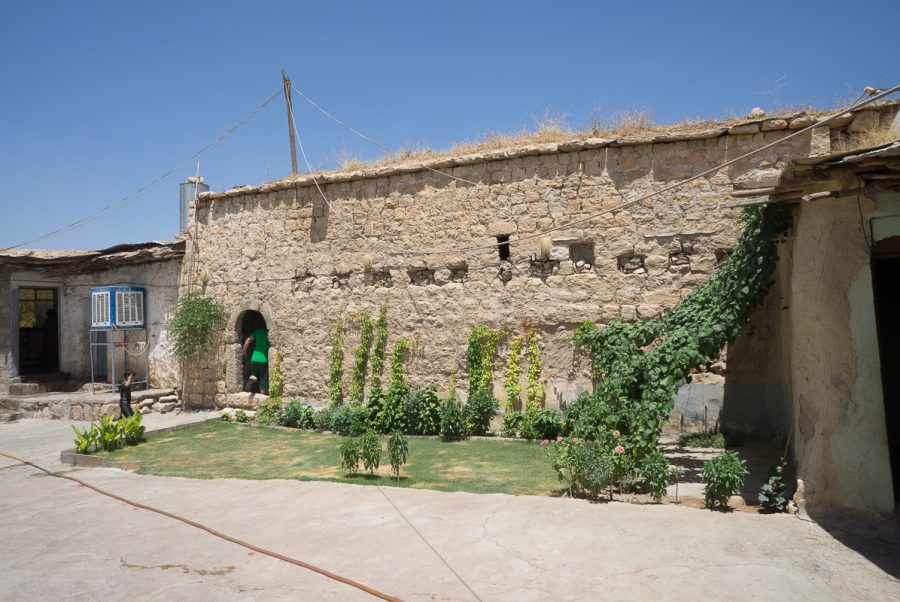
We know almost nothing about the history of the church in Sherman. We only know one relatively recent part of its history: the church in Sherman was bought by the great grandfather of the current owner. This snippet of information is revealing nonetheless. Given that there were 250 Chaldeans living in Sherman in 1913 and there was only one church, this testimony suggests that the village was abandoned at the start of the 20th century, i.e. “at the time of the great grandfather”, most likely at the time of the anti-Christian persecution (Seyfo) in the eastern provinces of the Ottoman Empire in the period between 1915 and 1918. Part of a private estate, the church in Sherman is built on a promontory. It is built of natural stone blocks jointed with mortar. The stone threshold is engraved with a cross in a rectangular frame.
Pic : The ancient church in Sherman used as an outhouse. July 2017 © Pascal Maguesyan / MESOPOTAMIA
Location
The church in Sherman[1]is located at 36°48’04.9″N 43°43’33.2″E and 736 metres altitude.
Sherman, to the west of Great Zab backs onto the mountain range which borders Iraqi Kurdistan. The village is 5 km as the crow flies (12 km by road) to the east of Gunduk[2]and 19 km north-west of the city of Aqrah.[3]
The village is also 100 km to the east of Dohuk-Nohadra and 93 km north of Erbil.
_______
[1]Sherman was also known as Scharmin. The village is now known as Kon Cixhor.
[2]The village of Gunduk is also known as Nerem, Niramor Nerem Gundik.
Fragments of Christian history
According to the tradition, the origin of the Church of the East goes back to the apostles and evangelizing preachers like Thomas, Addai (some assert that Addai is also the disciple Thaddeus, also known as Jude) and Mari. The new religion would have been preached specifically to local Jewish communities. The city of Aqrah, close to Sherman, is known for having a thriving Jewish community up until the 1940s[1].
This Christianity born out of this apostolic tradition, spread around Mesopotamia during the three first centuries, but it was really from the 4th century on and with the large number of martyrs persecuted by the Persian king Shapur II, that the Assyrian Church of the East really stepped into local history.
From the very long Christian history, let us notice that these mountains, very difficult to access to in old days, were both at the same time a place of flourishing and protection for the Church of the East.
The Catholic, specifically Dominican, missions flourished here from the 18th century onwards and converted the local Christian communities to Catholicism. It was at this time that the inhabitants of Sherman, formerly members of the Church of the East, integrated the Chaldean church.
At the start of the 20th century, on the eve of the First World War, the village of Sherman where there was a large Chaldean Christian community, was part of the cazaof Aqrah in the vilayet of Mosul, part of the Ottoman Empire.
The circumstances of the Christians in the most remote regions of the Empire became catastrophic during the genocide of the Armenians, Assyrians, Chaldeans and Syriacs in the Ottoman Empire from 1915-1918.
The rest of the 20th century was not much happier for the Assyrian-Chaldeans from the mountains of Iraqi Kurdistan. Between 1961 and 1991, the successive wars which opposed the Iraqi government and the Kurdish peshmerga weighed heavily on the Christian communities and their heritage in these regions which were frequently bombed, notably with chemical weapons, where the populations were evacuated and access was prohibited.
_______
Epilogue of the Christian presence
In 1913, there was still a Christian community in Sherman of 250 Chaldeans, with a priest, a church and a school[1]. Sherman was one of the three largest Chaldean towns in the diocese of Aqrah. A century later, there were no more Christians in this rural location[2]. The population of Sherman became entirely Kurdish Muslim. Despite the mass repatriation of Christians to the villages of their birth, at the end of the 1990s and after the fall of Saddam Hussein in 2003, no Christians returned to Sherman. The last trace of the village’s Christian past is the church and the private estate.
_______
[1]InL’Église chaldéenne catholique, autrefois et aujourd’hui, Abbé Joseph Tfinkdji, 1913, Extract from the Annuaire Pontifical Catholique from 1914, p. 51. Sherman is referred to here as Schirman.
[2]On the day of the MESOPOTAMIA team’s visit to Gunduk, on 16 July 2017, there was not one single Christian in the village.
History and description of the Mar Shmoni church in Sherman
We know almost nothing about the history of the church in Sherman. Not even its name, as there is a lack of sources. Although any conclusions must remain very cautious as the church in Sherman is clearly ancient.
We only know one relatively recent part of its history: the church in Sherman was bought by the great grandfather of the current owner, whose first name is Akhmad[1]. This snippet of information is revealing nonetheless. Given that there were 250 Chaldeans living in Sherman in 1913 and there was only one church, this testimony suggests that the village was abandoned at the start of the 20th century, i.e. “at the time of the great grandfather”, most likely at the time of the anti-Christian persecution (Seyfo[2]) in the eastern provinces of the Ottoman Empire in the period between 1915 and 1918. The Chaldean Christian community in Sherman was no doubt forced to leave the village. It is more or less obvious that the church was not sold but taken by force. This analysis concords with the genocide literature and the experience of Christians in the villages and regions where they lived up until 1915.
Part of a private estate, the church in Sherman is built on a promontory. There is a terrace in front of the church with a small garden to the right of the entrance door.
It is built of natural stone blocks jointed with mortar. The entrance door is quite low, forming a semi-circular arch. The stone threshold is engraved with a cross in a rectangular frame.
The church is formed of two parallel rooms with semi-circular barrel vaults. On entering the church, the first room contains a small barrel full of debris. In the past, this may have been a well or tonir, an ancient buried oven for cooking the bread used for Eucharist. This room will also have been used as the narthex. At the back of this room, in the right-angle behind the wall is a baptistery with the remains of the baptism font.
Two doors, one of which is obstructed, pass between the first and second room, i.e. the nave of the church. At the back the royal door is still standing. Its semi-circular arch opening accesses the sanctuary, where one finds the ruins of a small high altar up against the wall. The sanctuary and baptistery communicate via a low door.
_______
Monument's gallery
Monuments
Nearby
Help us preserve the monuments' memory
Family pictures, videos, records, share your documents to make the site live!
I contribute